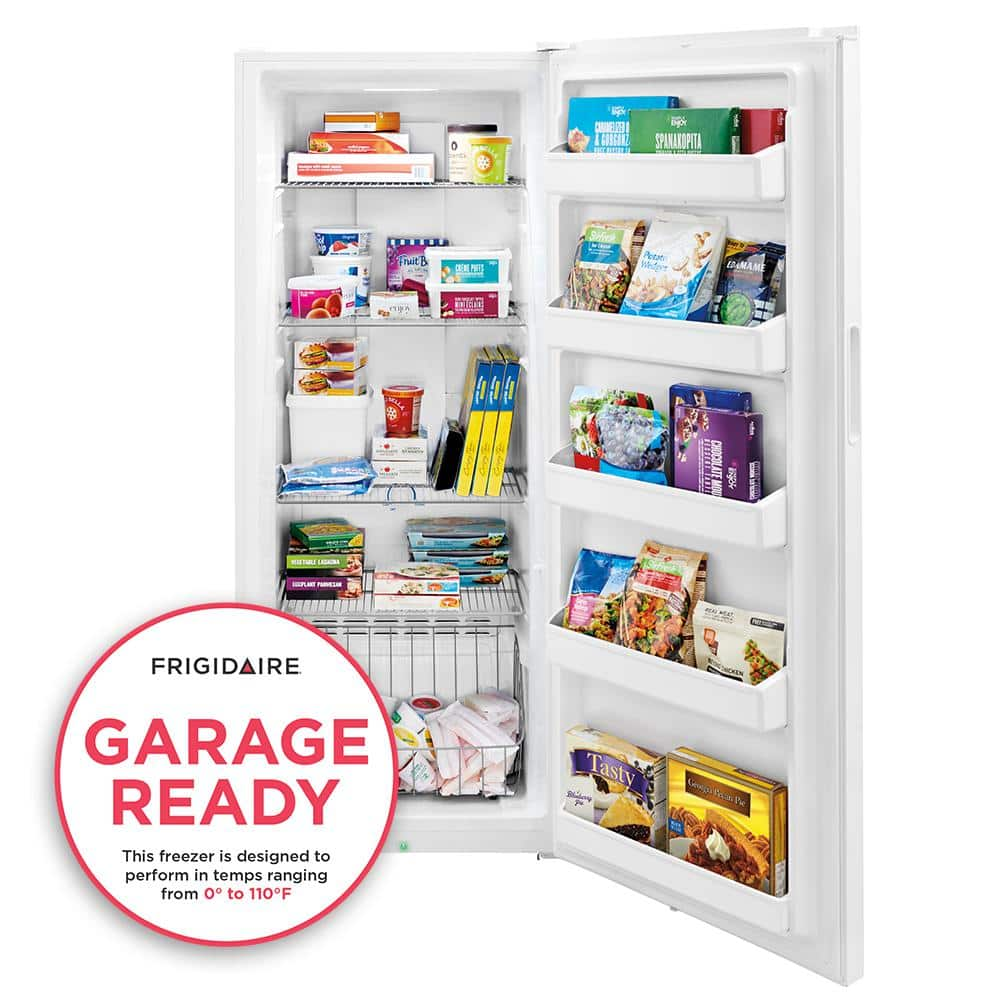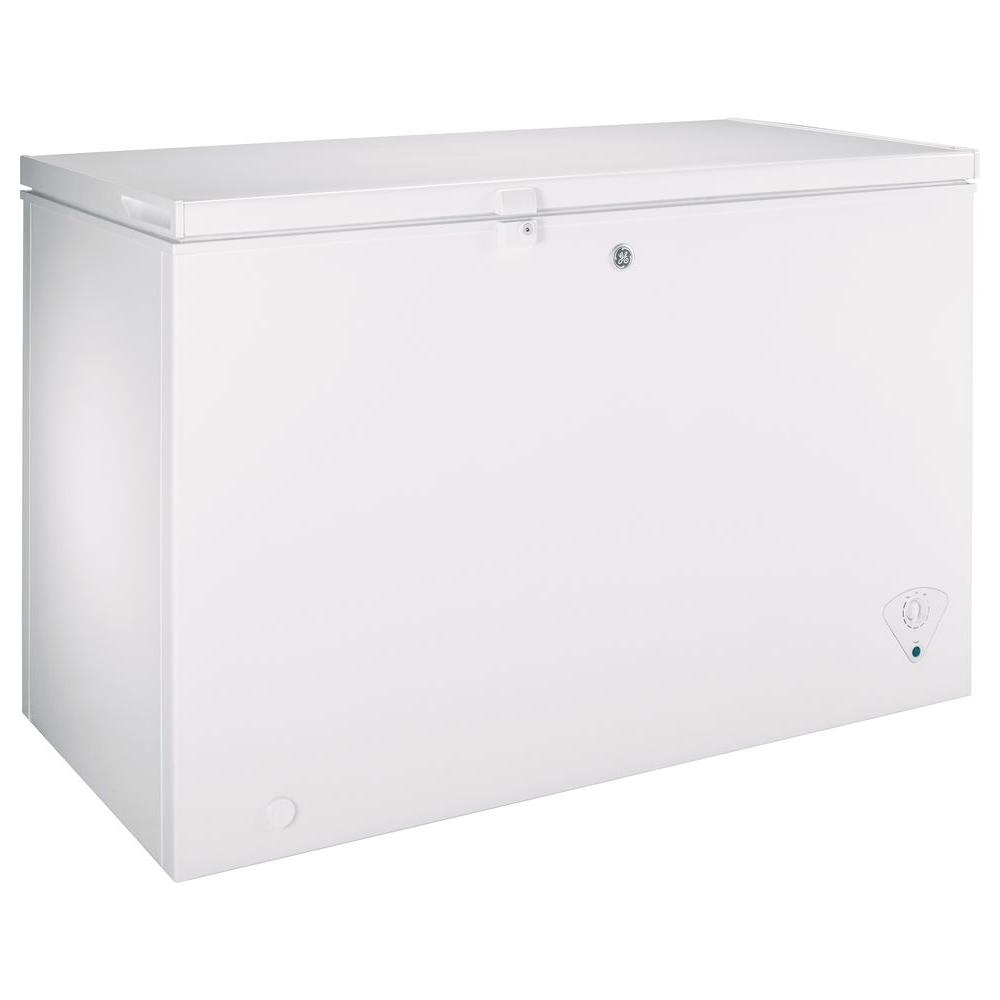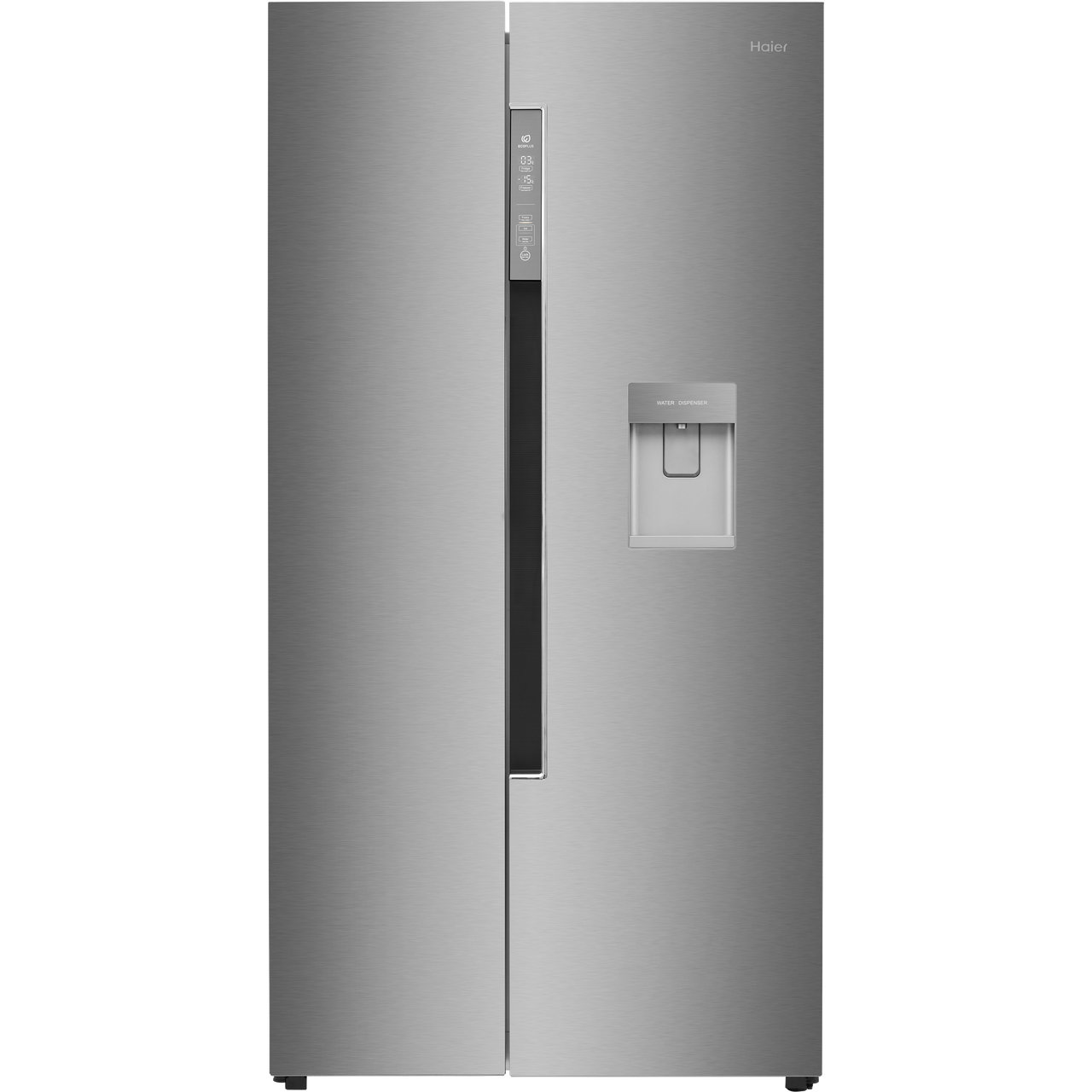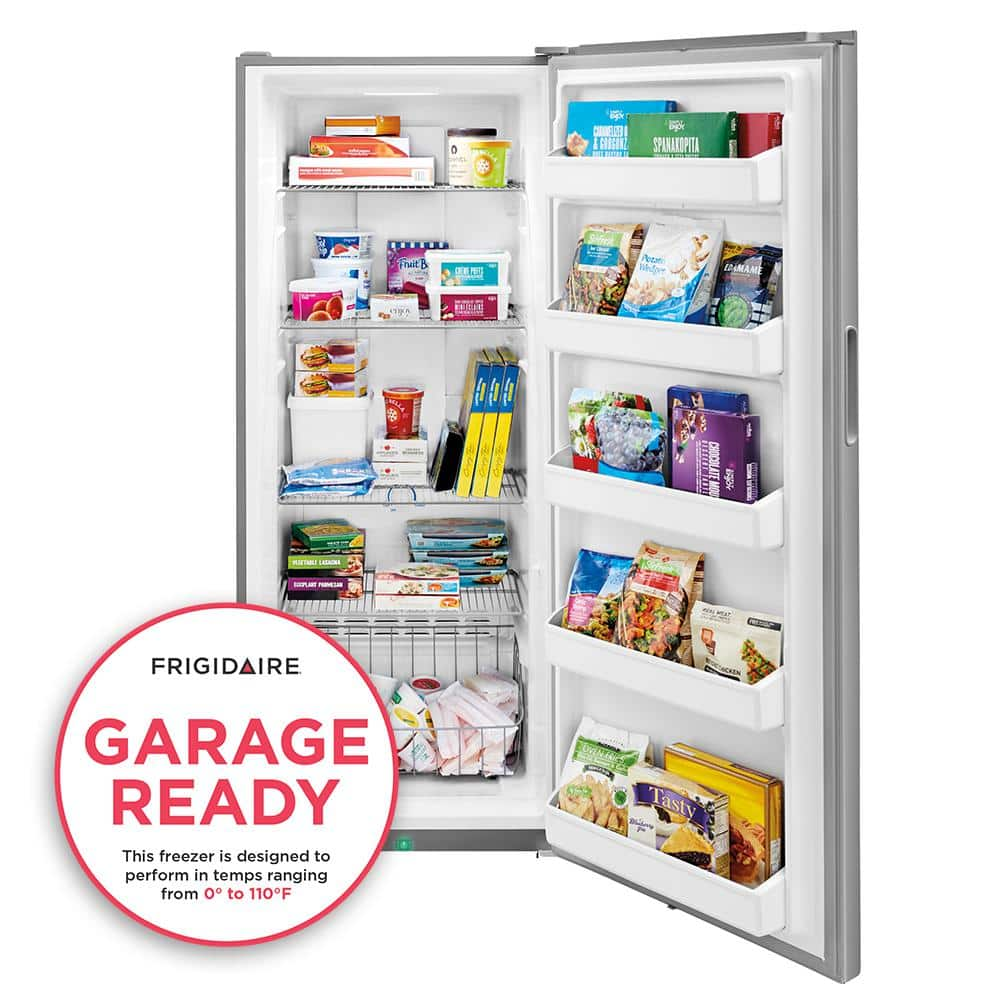Frigidaire 13 cu. ft. Frost Free Upright Freezer with Garage Ready, EvenTemp and Reversible Door in White
Power outage assurance keeps food frozen for two days. EvenTemp cooling system prevents warm spots and unwanted freezing. Door jar alarm alerts if the door is left open.
The Frigidaire 13.0 cu. ft. Upright Freezer allows you to conveniently store all of your favorite frozen foods with a variety of ways to organize the interior. Ensure food freshness with a superior tight seal, floor-projected power-on indicator and door ajar alarm. Frigidaire’s EvenTemp Cooling System constantly circulates cold air throughout the freezer with smart sensing technology that adjusts airflow to maintain a uniform temperature, while bright LED lighting ensures you’ll spend less time digging through your freezer for items.
- 13.0 cu. ft. storage capacity provides ample space to stock up on frozen foods
- Power outage assurance uses a superior tight seal locking in cold air, keeping food frozen for 2 days if theres a power outage
- EvenTemp Cooling System constantly circulates cold air throughout the freezer with smart sensing technology that adjusts airflow to maintain a uniform temperature
- 4 metallic wire shelves, 1 deep bottom wire basket and five spacious door bins allow maximum and flexible interior organization
- Door Ajar Alarm alerts you if the door is left open or the freezers temperature rises
- Floor-Projected Power-On indicator light lets you know your foods are safely frozen
- With Frost-Free Operation, you’ll never defrost your freezer again
- Internal dial temperature control makes controlling the temperature simple and easy
- Adjustable Temperature Controls let you select the correct temperature for your needs
- Bright LED lighting makes it easy to see what’s inside
- Smooth white finish with white case
- Place this unit in your garage without worry. This unit is designed to perform in temperatures ranging from 0°F to 110°F
- The power cord is included, it’s a 5 ft (60 inch) cord and requires 115V grounded 3-prong electrical outlet to operate
Additional information
| Depth (Excluding Handles) (in.) | 25.625 |
|---|---|
| Depth (Including Handles) (in.) | 25.625 |
| Depth With Door Open 90 Degrees (In) | 52.25 |
| Height to Top of Case (in.) | 67.75 |
| Height to Top of Door Hinge (in.) | 67.75 |
| Minimum Side Air Clearance (In) | 4 |
| Product Depth (in.) | 25.625 |
| Product Height (in.) | 67.75 |
| Product Width (in.) | 27.75 |
| Certifications and Listings | CSA Listed |
| Warranty Information | One Year Limited |






by Rob
The alarm for the door being open does not work at all, from day 1. Otherwise a great freezer.
by Laramie
Very happy with this freezer! It makes it so much easier to organize and keep what we need on hand.
by Joseph
Great freezer So much easier to use than a chest freezer.
by Dayna
It’s very nice, quiet, and have no complaints!
by Bryan
Exactly what we had hoped for, and the delivery team was awesome!
by Charles
Fast delivery. Item exactly as described. Seems to be working great.